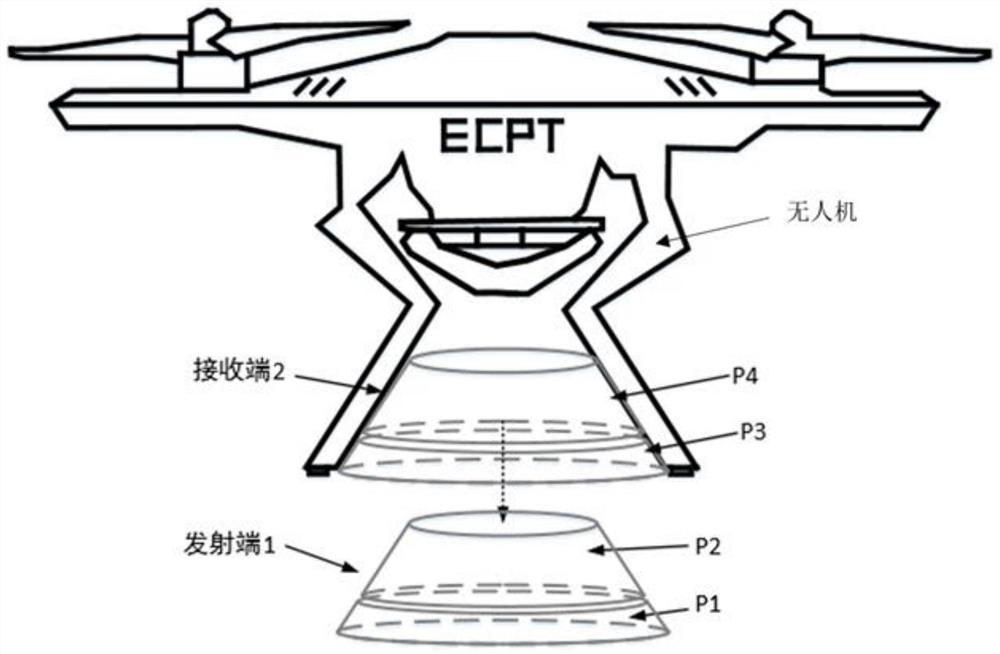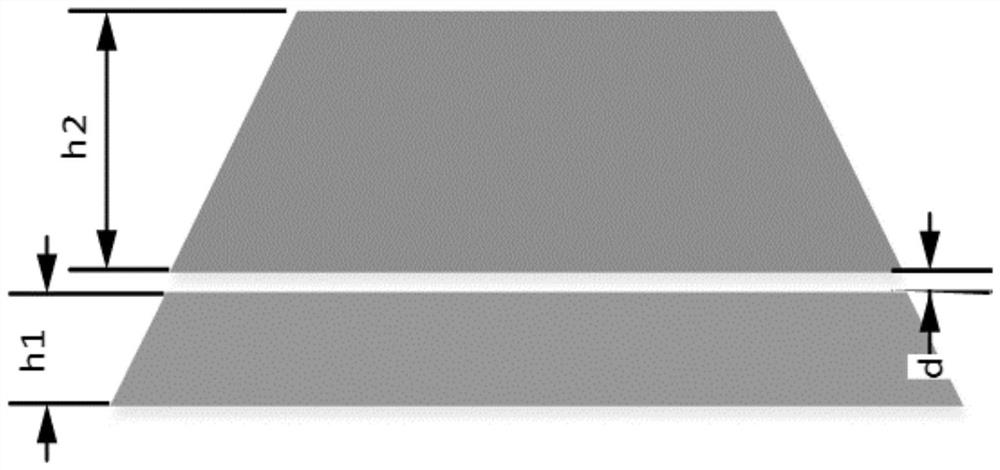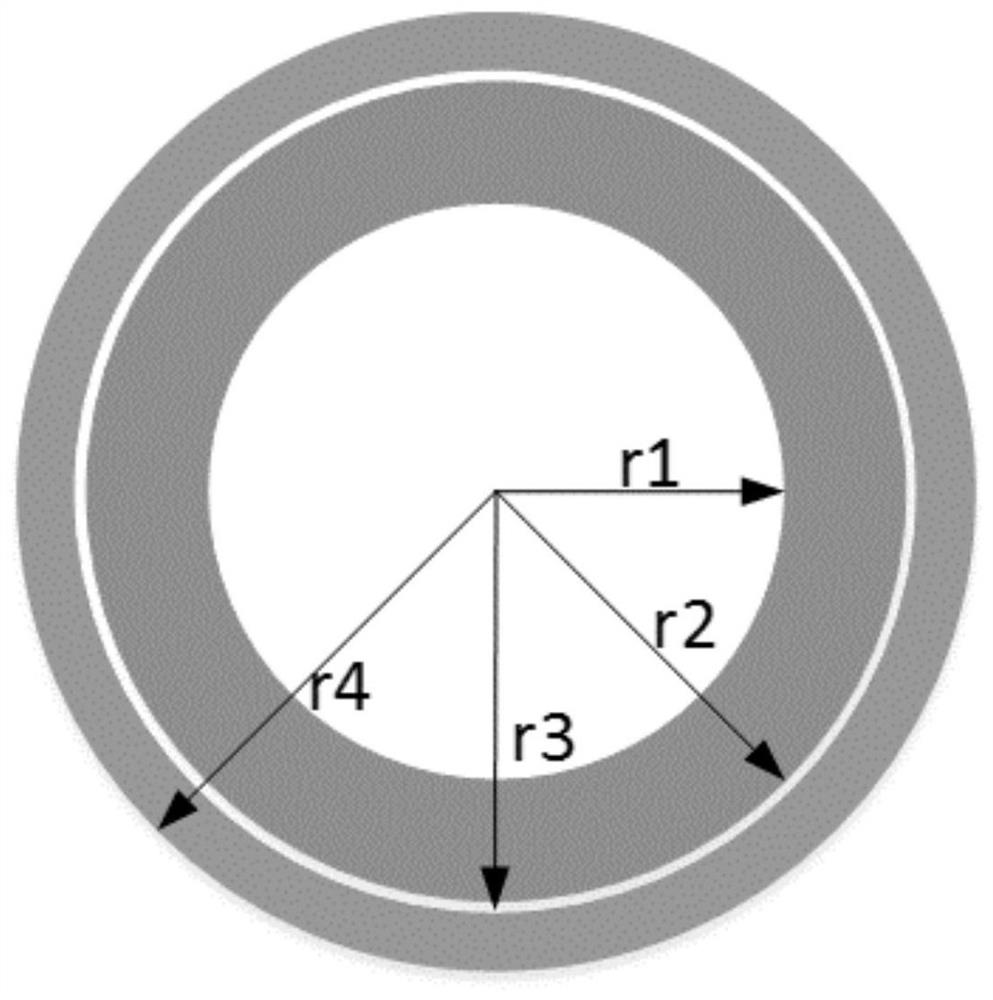Unmanned aerial vehicle electric field coupling mechanism, wireless charging system, platform and unmanned aerial vehicle
A coupling mechanism and wireless charging technology, applied in the field of unmanned aerial vehicles, can solve the problems of conductor eddy current loss, large electromagnetic interference in the surrounding environment, high cost, and achieve the effect of low power consumption operation
- Summary
- Abstract
- Description
- Claims
- Application Information
AI Technical Summary
Problems solved by technology
Method used
Image
Examples
Embodiment 1
[0038] The embodiment of the present invention provides an unmanned aerial vehicle electric field coupling mechanism, a new type of "round table" coupling mechanism, its structure is as follows figure 1 As shown, it includes transmitter 1 and receiver 2. The front view / left view of the receiving end 2 is as follows figure 2 As shown, the top view is as image 3 shown.
[0039] The transmitting end 1 includes an upper circular platform P2 at the transmitting end and a lower circular platform P1 at the transmitting end at a distance from the first preset height, and the receiving end 2 includes a hollow upper circular platform P4 at the receiving end (the height is h2, and the inner diameter is r2~ r1) and the hollow lower circular platform P3 at the receiving end (its height is h1, and its inner diameter is r4~r3).
[0040] The transmitting end 1 is made of solid insulating material, the outer surface is covered with the first metal foil, and the receiving end 2 is made of ...
Embodiment 2
[0049] At present, UAV, as a mobile device with weak battery life, needs to be charged and discharged frequently. During the frequent moving in and out, it may cause damage to the ECPT circuit system. This embodiment aims to propose a new type of wireless charging system for drones based on electric field coupling while meeting the charging requirements of drones. The system selects a suitable coupling mechanism and resonant network to ensure that no excessive voltage and current impacts are generated during the moving in and out of the UAV, and when the UAV moves in, the system can efficiently and stably provide the required power for the load. Power; when the drone is removed, the system can automatically enter standby mode and maintain low power consumption.
[0050] This embodiment provides a UAV wireless charging system based on electric field coupling (Double T UAV ECPT system), including a transmitting circuit and a receiving circuit, and the transmitting circuit includ...
Embodiment 3
[0109] This embodiment provides a wireless charging platform for drones, including the transmitting circuit described in Embodiment 2. Similarly, the first electric energy emitting plate and the second electric energy emitting plate in the transmitting circuit of this embodiment are shown in the embodiment. The upper circular platform P2 at the transmitting end and the lower circular platform P1 at the transmitting end.
[0110] In other embodiments, other electric energy emitter plates can be used, such as a common flat plate structure, but the charging effect will also vary depending on the structure.
[0111] In other embodiments, the power supply E dc , The full-bridge inverter can be replaced by other circuits with the same function.
PUM
| Property | Measurement | Unit |
|---|---|---|
| Thickness | aaaaa | aaaaa |
Abstract
Description
Claims
Application Information
 Login to View More
Login to View More - R&D
- Intellectual Property
- Life Sciences
- Materials
- Tech Scout
- Unparalleled Data Quality
- Higher Quality Content
- 60% Fewer Hallucinations
Browse by: Latest US Patents, China's latest patents, Technical Efficacy Thesaurus, Application Domain, Technology Topic, Popular Technical Reports.
© 2025 PatSnap. All rights reserved.Legal|Privacy policy|Modern Slavery Act Transparency Statement|Sitemap|About US| Contact US: help@patsnap.com



